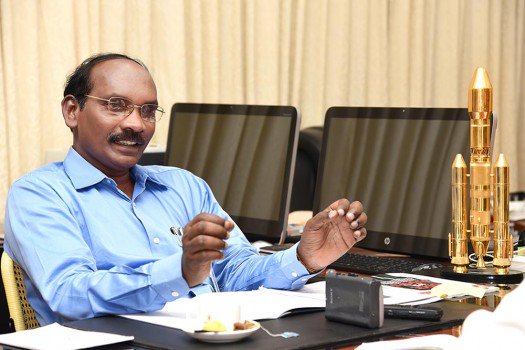ISRO Chief visits temple before launching India’s biggest space mission
Seeking country’s richest deity Lord Venkateshwara’s blessings as per Indian Space Research Organisation (ISRO) traditions, ISRO chief Dr Kailasavadivoo Sivan, on Saturday, visited Tirumala Tirupati Temple in Andhra Pradesh ahead of Monday’s Chandrayaan 2 launch. Addressing the reporters after the darshan, he shared details of Monday’s launch.
“On Monday, early morning at 2:51 AM, we are going to have the most important and prestigious mission – Chandrayaan 2. The vehicle used for this mission is GSLV MKIII. After the successful launch, it will take two months to go and land on the moon’s south pole,” said Sivan.

Talking about the importance of Chandrayaan 2, Sivan added that the mission aims at discovering new lunar science and also hopes demonstration of new technological development in ‘soft landing’.
“Preparations have been going on without any hitch. We hope the launch happens on Monday at 2:51 AM, as planned. This mission demonstrates the new technological development happening in soft landing. We will also get a lot of new lunar science which makes it a very prestigious mission for India.”
According to the reports, on last Sunday, Sivan also visited the Krishna Mutt in Udupi, Karnataka seeking blessings for the success of the Chandrayaan 2 mission.
For the unversed, Chandrayaan 2 is an Indian lunar mission which no other country in the world has ever gone before – the Moon’s south polar region, as explained by ISRO. With this epic achievement, India becomes the fourth country after the likes of US, Russia and China to land a probe on the lunar surface.
Chandrayaan 2 which will be launched from ISRO’s traditional home base- Sriharikota on early Monday morning, was planned, designed and will be implemented on a budget of Rs. 960 crores ($140 million).
Chandrayaan 2 mission will take off on July 15 and is expected to make a ‘soft landing’ on the lunar South Pole – between two craters — Manzinus C and Simpelius N — at a latitude of about 70° south, on September 6.












